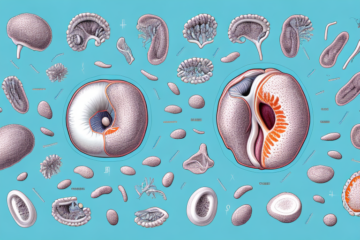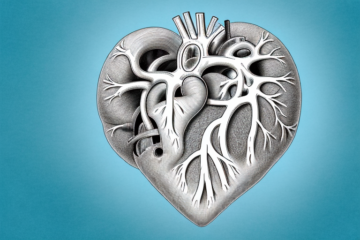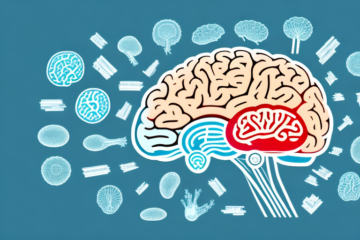Dyspareunia is a medical condition characterized by pain or discomfort experienced during sexual intercourse. It can be distressing, affecting intimacy between partners and causing emotional stress. This article aims to explore dyspareunia in detail, from its symptoms to its causes, treatment options, and more. If you or someone you know is experiencing dyspareunia, this article will provide you with important information to understand and manage the condition.
Understanding Dyspareunia: Definition and Types
Dyspareunia is a medical term referring to pain experienced during sexual intercourse. It can vary in intensity from mild discomfort to severe pain, and it can occur before, during, or after intercourse. Dyspareunia can be classified into two types:
- Superficial dyspareunia: pain experienced around the vaginal opening or the vulva
- Deep dyspareunia: pain experienced deep inside the pelvis
The causes of dyspareunia may differ depending on the type experienced.
Superficial dyspareunia is often caused by vaginal infections, skin conditions, or irritation from products such as lubricants or condoms. It can also be a result of vaginal dryness, which can occur during menopause or as a side effect of certain medications.
Deep dyspareunia, on the other hand, can be caused by conditions such as endometriosis, pelvic inflammatory disease, or uterine fibroids. It can also be a result of scar tissue from previous surgeries or trauma to the pelvic area.
The Prevalence of Dyspareunia: Who is Most Affected?
Research shows that up to 60% of women experience dyspareunia at some point in their lives, while 5-10% describe it as a regular occurrence. Dyspareunia can affect women of any age, but it is most common among those who have recently given birth, are postmenopausal, or have certain gynecological conditions. Men can also experience dyspareunia, although less frequently than women. It can affect men of any age, especially those with conditions affecting the genital area or prostate.
There are several factors that can contribute to dyspareunia, including physical, psychological, and social factors. Physical factors can include vaginal dryness, infections, injuries, or abnormalities in the genital area. Psychological factors can include anxiety, depression, or a history of sexual abuse. Social factors can include cultural or religious beliefs that view sex as taboo or shameful, or relationship issues such as lack of communication or intimacy.
Treatment for dyspareunia depends on the underlying cause. For physical causes, treatment may include medication, surgery, or physical therapy. For psychological causes, therapy or counseling may be recommended. In some cases, a combination of treatments may be necessary. It is important for individuals experiencing dyspareunia to seek medical attention and discuss their symptoms with a healthcare provider to determine the best course of treatment.
Common Symptoms of Dyspareunia: Pain, Discomfort, and More
The most common symptom of dyspareunia is pain during sexual intercourse, which can be described as a burning, itching, or stabbing sensation. Other symptoms include:
- Discomfort during foreplay or other sexual activities
- Bleeding after intercourse
- Reduced sexual desire
- Depression or anxiety related to sexual activity
If you are experiencing any of these symptoms, it is important to see a healthcare provider for diagnosis and treatment.
It is important to note that dyspareunia can have both physical and psychological causes. Physical causes may include vaginal infections, endometriosis, pelvic inflammatory disease, or vaginal dryness. Psychological causes may include anxiety, depression, or a history of sexual abuse. It is important to discuss any concerns or symptoms with a healthcare provider to determine the underlying cause and appropriate treatment plan.
Causes of Dyspareunia: Exploring Physical and Psychological Factors
Dyspareunia can be caused by a variety of physical and psychological factors, or a combination of both. These factors may include:
- Genital infections
- Endometriosis
- Vulvodynia
- Vaginismus
- Vaginal dryness
- Physical trauma or injury
- Emotional or mental health conditions, such as anxiety or depression
Dyspareunia can also be caused by certain medications, such as antidepressants or hormonal contraceptives, or lifestyle habits such as smoking or excessive alcohol consumption. Identifying the cause of dyspareunia is essential in determining the appropriate treatment.
Physical factors that can contribute to dyspareunia include pelvic floor muscle dysfunction, which can cause pain during intercourse. Additionally, hormonal imbalances, such as those caused by menopause or pregnancy, can lead to vaginal dryness and discomfort during sex. In some cases, structural abnormalities, such as uterine fibroids or ovarian cysts, can also cause pain during intercourse.
Psychological factors that can contribute to dyspareunia include a history of sexual trauma or abuse, relationship issues, and stress or anxiety. These factors can lead to tension in the pelvic floor muscles, making intercourse painful. It is important to address any underlying psychological issues in order to effectively treat dyspareunia.
Physical Causes of Dyspareunia: Infections, Injuries, and More
Dyspareunia caused by physical factors can be treated by addressing the underlying medical condition. Infections such as yeast infections or bacterial vaginosis can be treated with medication. Endometriosis or pelvic inflammatory disease may require surgery or other medical procedures.
Injuries to the pelvic area can also cause dyspareunia. These injuries may include childbirth trauma, surgical scars, or other physical trauma. Treatments for these conditions may include pelvic floor physical therapy or surgical intervention.
Another physical cause of dyspareunia is vulvodynia, which is a chronic pain condition affecting the vulva. This condition can make sexual intercourse painful or impossible. Treatment for vulvodynia may include medication, physical therapy, or nerve blocks.
Additionally, hormonal imbalances can also contribute to dyspareunia. Low estrogen levels can cause vaginal dryness and thinning of the vaginal walls, leading to pain during intercourse. Hormone replacement therapy or topical estrogen creams may be used to treat this condition.
Psychological Causes of Dyspareunia: Anxiety, Depression, and More
Psychological factors can contribute to dyspareunia, and it is important to address these underlying issues to achieve effective treatment. Conditions such as anxiety or depression can cause vaginal muscle tension or decreased lubrication, leading to discomfort or pain during sexual activity. Counseling, therapy or other forms of mental health treatment may be necessary for individuals experiencing dyspareunia related to psychological factors.
In addition to anxiety and depression, other psychological factors can also contribute to dyspareunia. For example, past traumatic experiences such as sexual abuse or assault can lead to pain during sexual activity. Relationship issues, such as communication problems or a lack of emotional intimacy, can also cause dyspareunia. It is important for individuals experiencing dyspareunia to discuss any potential psychological factors with their healthcare provider, as addressing these underlying issues can lead to more effective treatment and improved sexual health.
Risk Factors for Dyspareunia: Age, Health Conditions, and Lifestyle Habits
Risk factors for dyspareunia include age, certain health conditions, and specific lifestyle habits, including:
- Previous pelvic surgery or trauma
- Menopause
- Vaginal infections
- Vulvar or vaginal conditions such as vulvodynia or vaginismus
- Depression or anxiety
- Smoking
- Excessive alcohol or drug use
- Poor overall health
If you are experiencing any of these risk factors, it is essential to seek medical attention to prevent or manage dyspareunia.
It is important to note that dyspareunia can also be caused by certain medications, such as antidepressants or hormonal contraceptives. Additionally, lack of communication or discomfort discussing sexual preferences with a partner can also contribute to dyspareunia. It is crucial to have open and honest communication with your healthcare provider and partner to address any concerns and find appropriate treatment options.
Diagnosing Dyspareunia: Medical Exams and Tests
If you suspect you are experiencing dyspareunia, a medical exam and history will likely be performed to determine the underlying cause. Your doctor may perform a physical examination of the pelvis, or order additional tests such as a Pap test or ultrasound to check for underlying medical conditions.
In addition to a physical exam and medical history, your doctor may also ask you questions about your sexual history and any previous experiences with pain during intercourse. This information can help your doctor determine if the pain is related to a physical issue or if it may be caused by psychological factors such as anxiety or past trauma.
If a physical cause is suspected, your doctor may recommend further testing such as a pelvic MRI or a hysteroscopy to examine the inside of the uterus. In some cases, a biopsy may be necessary to rule out the possibility of cancer or other serious conditions.
Treatment Options for Dyspareunia: Medications, Therapies, and Lifestyle Changes
Treatment for dyspareunia will depend on the underlying cause. Treatment options may include:
- Topical medication to reduce pain and discomfort
- Hormonal treatment to reduce vaginal dryness
- Pelvic floor physical therapy to improve vaginal muscle tone and increase lubrication
- Psychotherapy to treat underlying psychological factors
- Surgery to treat underlying medical conditions
- Lifestyle changes such as exercise, smoking cessation, and relaxation techniques
It is essential to speak with your healthcare provider to determine the recommended treatment plan for your specific condition.
In addition to the above treatment options, there are also alternative therapies that may be helpful in managing dyspareunia. These include acupuncture, herbal remedies, and massage therapy. While there is limited scientific evidence to support the effectiveness of these therapies, some women have reported improvement in their symptoms. It is important to discuss any alternative therapies with your healthcare provider before trying them, as they may interact with other medications or have potential side effects.
Home Remedies for Dyspareunia: Natural Methods to Alleviate Pain
There are several home remedies that can help alleviate mild symptoms of dyspareunia:
- Using water-soluble lubricants to reduce friction and increase comfort during sexual activity
- Applying a warm compress to the pelvic area to reduce muscle tension
- Practicing relaxation techniques such as deep breathing or meditation to reduce anxiety and promote relaxation
- Engaging in regular exercise to improve muscle tone and increase blood flow
It is essential to speak with your healthcare provider before trying any home remedies to ensure they are safe and effective.
In addition to these home remedies, there are also medical treatments available for more severe cases of dyspareunia. These may include hormone therapy, physical therapy, or surgery. It is important to discuss all treatment options with your healthcare provider to determine the best course of action for your individual needs.
Coping with Dyspareunia: Emotional Support and Communication Tips
Dealing with dyspareunia can be a challenging and stressful experience. It is essential to seek emotional support from your partner, friends, family, or a mental health professional. Communication with your partner is also crucial in managing dyspareunia. Discussing your needs, preferences, and feelings with your partner can help reduce stress and anxiety related to sexual activity.
In addition to seeking emotional support and communicating with your partner, there are other strategies that can help manage dyspareunia. These may include exploring alternative forms of sexual activity that do not cause pain, using lubricants or vaginal moisturizers, practicing relaxation techniques such as deep breathing or meditation, and seeking medical treatment for any underlying conditions that may be contributing to the pain. It is important to remember that dyspareunia is a common issue and there are many resources available to help manage and overcome it.
Living with Dyspareunia: How to Manage Long-Term Symptoms
Living with dyspareunia can be challenging, but there are ways to manage long-term symptoms. It is essential to maintain regular communication with your healthcare provider to monitor symptoms and adjust treatment plans accordingly. Engaging in regular self-care activities such as exercise, stress management, and healthy eating habits can also help manage symptoms and improve overall health and well-being.
In addition to these self-care activities, seeking support from a therapist or counselor can also be beneficial for managing the emotional impact of dyspareunia. It is common for individuals with dyspareunia to experience anxiety, depression, and relationship issues. A mental health professional can provide coping strategies and support to improve overall mental health and well-being.
Furthermore, exploring alternative forms of sexual expression and intimacy can also be helpful for individuals with dyspareunia. This can include non-penetrative sexual activities, such as oral sex or mutual masturbation, or exploring other erogenous zones on the body. Communication with a partner about these alternative forms of intimacy is crucial for maintaining a healthy and fulfilling sexual relationship.
Preventing Dyspareunia: Tips for Maintaining Sexual Health
Preventing dyspareunia involves maintaining healthy sexual practices and overall wellness. Some ways to prevent dyspareunia include:
- Practicing safe sex and using protection to prevent sexually transmitted infections
- Maintaining a healthy lifestyle with regular exercise, healthy eating habits, and stress management techniques
- Addressing underlying medical conditions promptly to prevent complications or long-term effects
In addition to the above tips, there are other ways to maintain sexual health and prevent dyspareunia. One important factor is communication with your partner. Open and honest communication about sexual preferences, concerns, and any discomfort can help prevent dyspareunia and improve overall sexual satisfaction.
Another important aspect of sexual health is regular check-ups with a healthcare provider. Routine gynecological exams and STI screenings can help detect and treat any potential issues before they become more serious.
Conclusion: Seeking Help for Dyspareunia
Dyspareunia can be a distressing and uncomfortable medical condition, but it is treatable. If you or someone you know is experiencing dyspareunia, seeking help from a healthcare provider is essential. With the right diagnosis and treatment plan, individuals with dyspareunia can reduce pain and discomfort during sexual intercourse and improve overall quality of life.
It is important to note that dyspareunia can have both physical and psychological causes. Physical causes may include infections, hormonal imbalances, or vaginal dryness, while psychological causes may include anxiety, depression, or past trauma. Therefore, a comprehensive evaluation by a healthcare provider is necessary to determine the underlying cause of dyspareunia.
In addition to medical treatment, there are also self-care measures that can help manage dyspareunia. These may include using lubricants during sexual activity, practicing relaxation techniques, or engaging in pelvic floor exercises. It is important to discuss these options with a healthcare provider to determine the best course of action for each individual.









